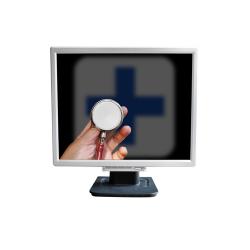
This modern question of how to engage has become a hot topic in fields ranging from business to education. But major shake-ups in health care delivery make it an important consideration for medical professionals as well.

This modern question of how to engage has become a hot topic in fields ranging from business to education. But major shake-ups in health care delivery make it an important consideration for medical professionals as well.
As hospitals, family practices, and clinics of all sizes make the obligatory shift to digital records, new possibilities for delivery models are opened up, including the old remote health care system popularly known as telehealth. While the drive for telehealth has typically been ensuring access (especially in remote or underdeveloped areas where there are fewer doctors—not to mention specialists), modern infrastructure and data mobility make virtual consultations more broadly viable.
The question is: what combination of remote and physical engagement yields the best health outcomes?
Medicare’s Plan D has quietly incorporated a powerful model for better managing patients with chronic conditions. More engagement—specifically, face-to-face time with their pharmacists—is required under the Medication Therapy Management (MTM) program. Seemingly intuitive (of course more communication reduces abuse and misuse of prescriptions), this program actually builds on several other emerging priorities in medical practice—and could provide important lessons for other care delivery models:
- MTM is just one example of a growing trend of increasing the involvement of other non-physician professionals in a patient’s comprehensive care. Thanks in part to the Affordable Care Act, prevention is taking priority as an important cost-controlling mechanism. Though reform is needed to bring compensation fully in line with this new reality, primary care is benefitting from an influx of providers beyond physicians.
- What is more, the MTM model puts a great deal of faith in the promise of Accountable Care. With Medicare money specifically earmarked for MTM services, the survival of the program depends on proving its worth by demonstrating that engagement does in fact help patients manage their medications more effectively.
- Finally, digital records platforms, under Meaningful Use, should bridge inpatient and outpatient services with respect to pharmacy services. Physicians and pharmacists, by sharing a patient’s EHR, can better ensure everything from the optimal dosage, to the most affordable version of a drug, as well as reconciling their recommendations with the patient’s personal medical history. The patient-facing portal ties it all together, bringing the clinic and pharmacy together in the patient’s own home, and continuing the consultation virtually, as it were, and collecting feedback.
Clearly, much depends on the success of implementing full-scale interoperable EHR platforms, along with integrating providers into an Accountable Care network. While measurements of the success of applied MTM programs have been limited, there have been some promising signs.
In fact, a pioneering clinic in Oregon has gone so far as to bring its MTM pharmacists into its in-patient units, taking engagement even further than Medicare rules currently stipulate. Both patient and provider attitudes have been generally positive to the move.
As more institutions and practices pass their Stage 3 benchmarks for Meaningful Use, more opportunities should emerge to measure and track engagement, and paint a clearer picture of just how much face-to-face time can effectively be replaced—or, in the case of some telehealth efforts established—by virtual systems.
telemedicine / shutterstock